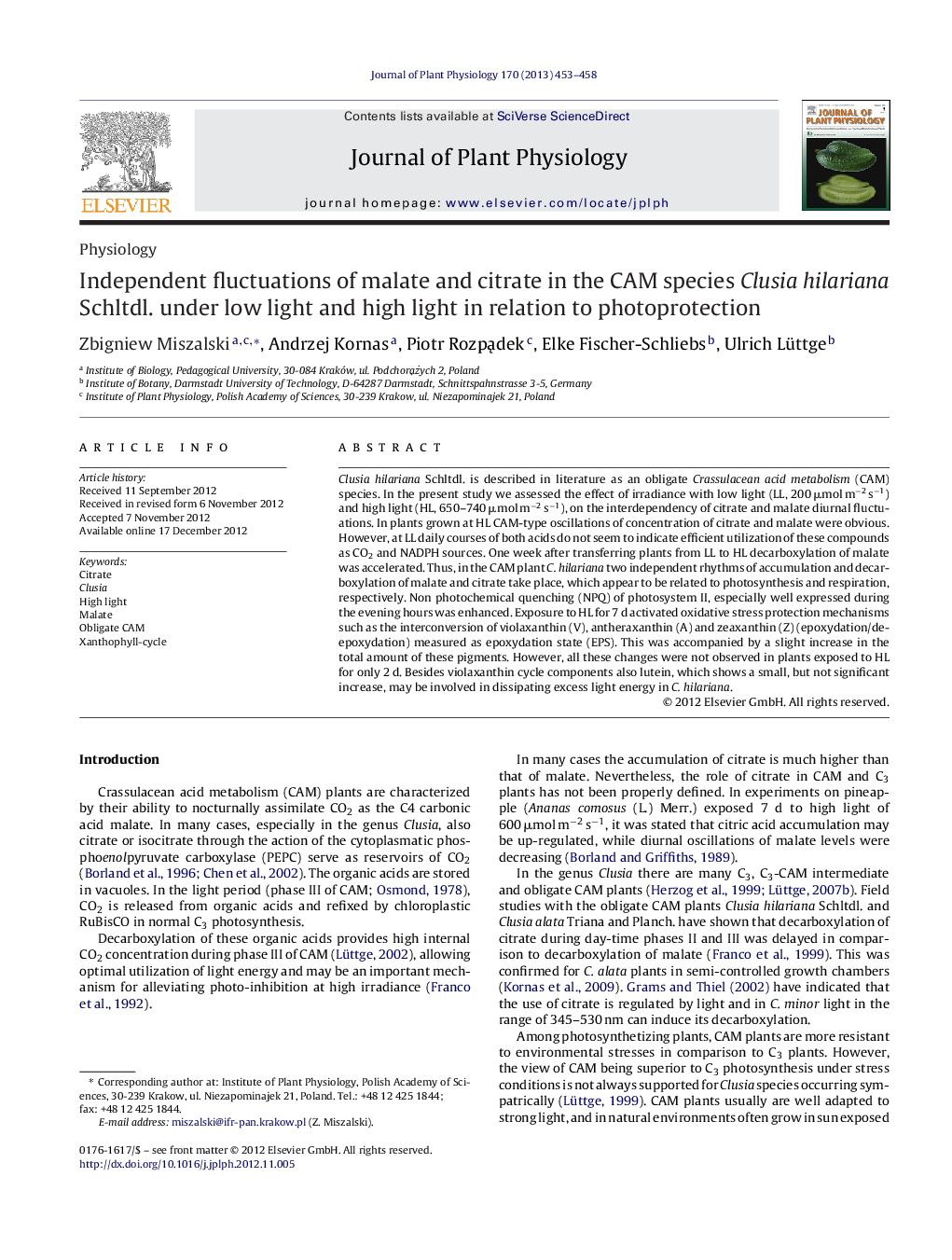| Article ID | Journal | Published Year | Pages | File Type |
|---|---|---|---|---|
| 2056053 | Journal of Plant Physiology | 2013 | 6 Pages |
Clusia hilariana Schltdl. is described in literature as an obligate Crassulacean acid metabolism (CAM) species. In the present study we assessed the effect of irradiance with low light (LL, 200 μmol m−2 s−1) and high light (HL, 650–740 μmol m−2 s−1), on the interdependency of citrate and malate diurnal fluctuations. In plants grown at HL CAM-type oscillations of concentration of citrate and malate were obvious. However, at LL daily courses of both acids do not seem to indicate efficient utilization of these compounds as CO2 and NADPH sources. One week after transferring plants from LL to HL decarboxylation of malate was accelerated. Thus, in the CAM plant C. hilariana two independent rhythms of accumulation and decarboxylation of malate and citrate take place, which appear to be related to photosynthesis and respiration, respectively. Non photochemical quenching (NPQ) of photosystem II, especially well expressed during the evening hours was enhanced. Exposure to HL for 7 d activated oxidative stress protection mechanisms such as the interconversion of violaxanthin (V), antheraxanthin (A) and zeaxanthin (Z) (epoxydation/de-epoxydation) measured as epoxydation state (EPS). This was accompanied by a slight increase in the total amount of these pigments. However, all these changes were not observed in plants exposed to HL for only 2 d. Besides violaxanthin cycle components also lutein, which shows a small, but not significant increase, may be involved in dissipating excess light energy in C. hilariana.
